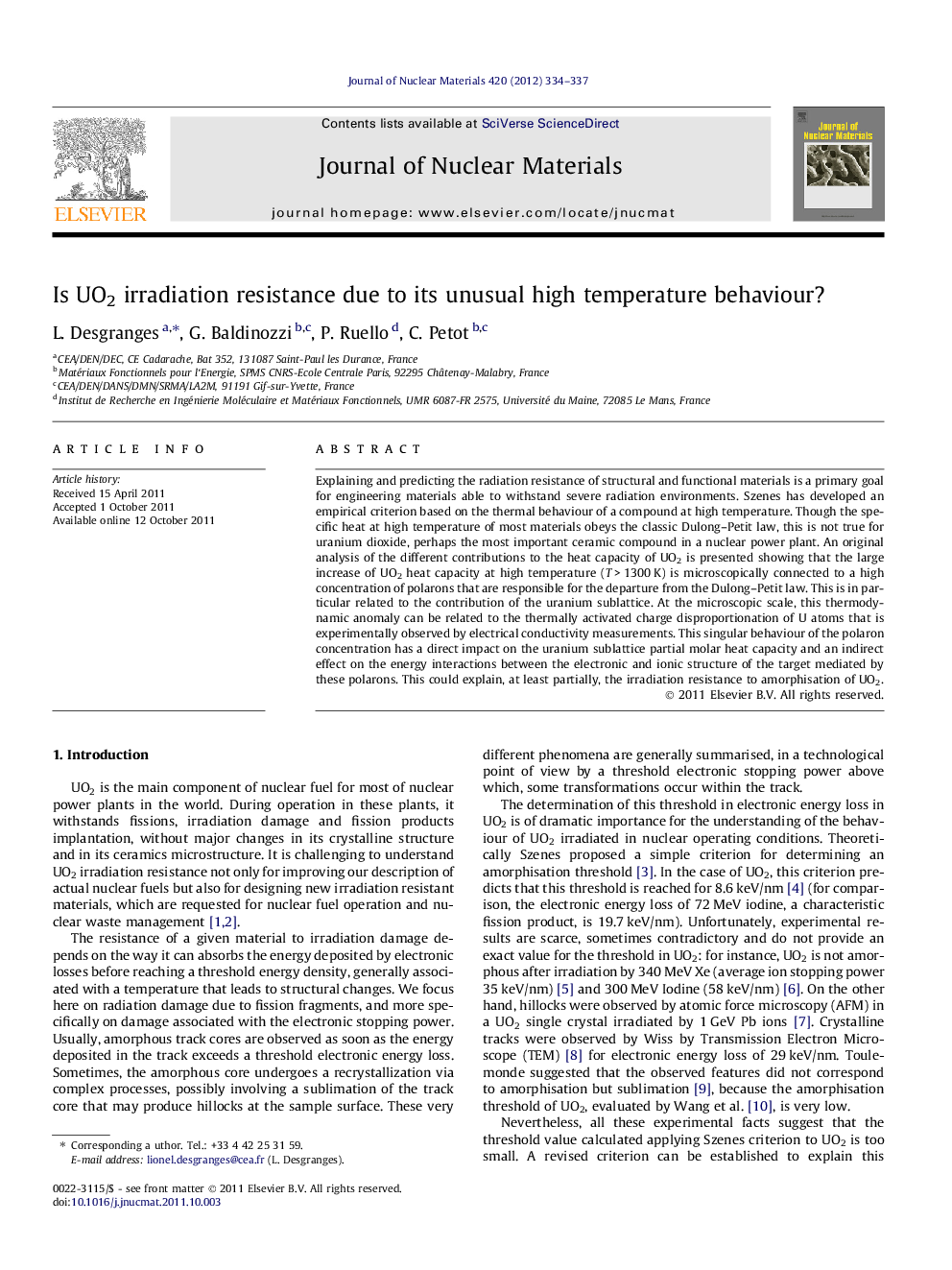| Article ID | Journal | Published Year | Pages | File Type |
|---|---|---|---|---|
| 1566476 | Journal of Nuclear Materials | 2012 | 4 Pages |
Explaining and predicting the radiation resistance of structural and functional materials is a primary goal for engineering materials able to withstand severe radiation environments. Szenes has developed an empirical criterion based on the thermal behaviour of a compound at high temperature. Though the specific heat at high temperature of most materials obeys the classic Dulong–Petit law, this is not true for uranium dioxide, perhaps the most important ceramic compound in a nuclear power plant. An original analysis of the different contributions to the heat capacity of UO2 is presented showing that the large increase of UO2 heat capacity at high temperature (T > 1300 K) is microscopically connected to a high concentration of polarons that are responsible for the departure from the Dulong–Petit law. This is in particular related to the contribution of the uranium sublattice. At the microscopic scale, this thermodynamic anomaly can be related to the thermally activated charge disproportionation of U atoms that is experimentally observed by electrical conductivity measurements. This singular behaviour of the polaron concentration has a direct impact on the uranium sublattice partial molar heat capacity and an indirect effect on the energy interactions between the electronic and ionic structure of the target mediated by these polarons. This could explain, at least partially, the irradiation resistance to amorphisation of UO2.
► We perform an analysis of UO2 high temperature thermodynamic properties. ► Evidence of thermal activated contribution due to polaron. ► The polarons enhance UO2 irradiation resistance by increasing its heat capacity and modifying its electronic properties.
